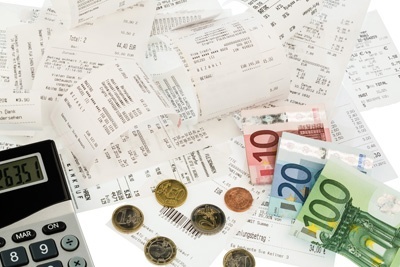As is the case with many other processes, the method for drafting an expense report can vary significantly from one company to another. Nevertheless, there is a series of concepts, requirements and aspects that are commonly shared in the vast majority of cases. Let’s look at these basic points.
The expense and mileage claim spreadsheet is the document that will be used to verify and manage travel expenses that a corporate traveller generates on a trip. The basic fields that must be included are the expense item, the supplier’s code, the amount and the date. In addition, depending on the needs of the company, the employee may be asked to add further information, such as the nature of the expense, the associated customer, the payment method, etc. Therefore, it is important that all of the employees have the same expense report form or template to complete. They must also have a very clear idea of each item. Otherwise, it may lead to misunderstandings, problems with reimbursements, etc. It is also important that the fields and extra information that the employees are asked to complete have a purpose. Information gathered just for the sake of asking, which will not later be used or analysed, is of no value to the company and wastes the expense reporter’s time unnecessarily.
 It goes without saying that, when it comes to drafting the expense report, employees have to stick to the facts, without exaggerating outgoings, including inappropriate expenses or changing the dates of expenses etc. To ensure this is the case, it is crucial that employees know the company’s expense policy, with all of the regulations established in it with respect to reimbursing expenses generated by corporate travellers.
It goes without saying that, when it comes to drafting the expense report, employees have to stick to the facts, without exaggerating outgoings, including inappropriate expenses or changing the dates of expenses etc. To ensure this is the case, it is crucial that employees know the company’s expense policy, with all of the regulations established in it with respect to reimbursing expenses generated by corporate travellers.
One of the most common policies is compulsory submission of receipts verifying all of the expenses reported. These are the simplified or complete invoices that the supplier issues when payment is made. Although there may be a case in which a company does not make this step compulsory in its policy, it is an extremely advisable good practice for the reporter always to attach the receipts, whether they are the originals or digital copies, so that the supervisor can verify their validity.
Very specific queries may sometimes arise regarding how to complete the expense report. For instance: What happens in the case of per day allowances of administrators that are not on the payroll? How is an expense in a restaurant reported if the cost has been generated by several employees but only one has paid? Do expenses paid for by company card have to be reported too? As there are no specific regulations stipulating these aspects, this type of query has to be specified in the company’s expense policy and, if this is not the case, the employee has to consult the supervisor to apply the specific criteria of the company.




